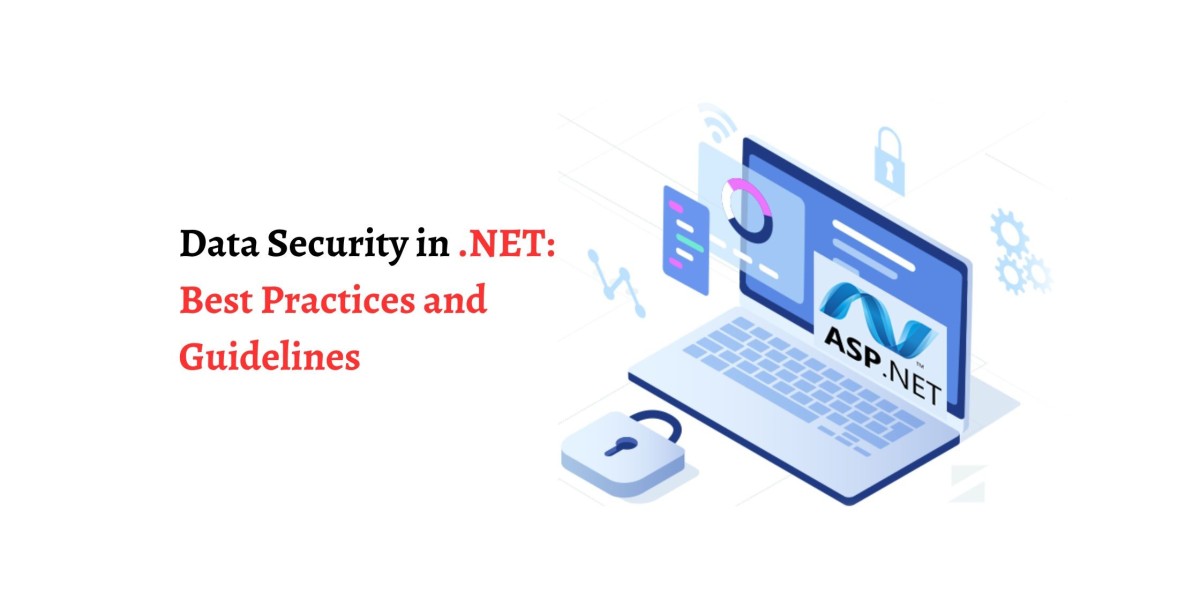It constitutes a collection of APIs that facilitate using an advanced type system, managing data, graphics, networking, file operations, and more. Dot net app development services offer a foundational base to enterprise applications for all sorts of business requirements. Henceforth, ensuring data security within .NET applications is crucial for businesses. Since dangerous threats prevail now and then in software operations, companies must adopt the best practices and defined guidelines to safeguard sensitive information. In this blog post, we'll delve into the best practices and guidelines necessary to uphold robust data security within the .NET framework.
1. Encryption is Non-Negotiable
Employ robust encryption mechanisms to protect data at rest and in transit. Utilize the built-in cryptographic functions provided by the .NET framework, such as AES (Advanced Encryption Standard), to ensure that sensitive information remains secure even if unauthorized access is gained.
2. Secure Authentication and Authorization
Implement strong authentication methods, such as multi-factor authentication (MFA), to fortify access controls. .NET offers various authentication providers and mechanisms that can be tailored to fit the specific security needs of your application. Additionally, employ role-based authorization to restrict access based on user roles, minimizing the risk of unauthorized data access.
3. Regularly Update Dependencies
Stay vigilant about updating third-party libraries and dependencies. Vulnerabilities in these components can be exploited to compromise the security of your application. Regularly check for updates and patches, and ensure that your application is running on the latest and most secure versions of all dependencies.
4. Input Validation and Parameterized Queries
Guard against SQL injection and other injection attacks by implementing input validation and parameterized queries. Ensure that user inputs are validated on both the client and server sides to prevent malicious data from entering the system. Parameterized queries in database interactions can mitigate the risks associated with unauthorized access.
5. Audit Trails for Accountability
Implement comprehensive logging and auditing mechanisms to create a trail of events within your application. In the event of a security incident, detailed logs can assist in identifying the source and nature of the breach. Log relevant information such as login attempts, access to sensitive data, and critical system events.
6. Regular Security Audits and Penetration Testing
Conduct regular security audits and penetration testing to identify and address vulnerabilities proactively. These tests simulate real-world attacks and help uncover potential weak points in your application's security architecture. Addressing these issues promptly strengthens the overall security posture of your .NET application.
7. Secure Configuration Practices
Follow secure configuration practices for both the .NET runtime and the underlying infrastructure. This includes securing database connections, configuring firewalls, and ensuring that unnecessary services or features are disabled. A well-configured environment is a fundamental aspect of a secure application.
8. Data Backups and Disaster Recovery
Prepare for the worst-case scenario by implementing robust data backup and disaster recovery plans. Regularly back up critical data and test the restoration process to ensure that data can be recovered in the event of data loss or a security breach.
9. Employee Training and Awareness
Acknowledge the human factor in security. Conduct regular training sessions to educate employees about security best practices and the importance of maintaining confidentiality. An aware and informed team is a crucial line of defense against social engineering attacks and internal security lapses.
Conclusion
Safeguarding data within the .NET framework requires a comprehensive and proactive approach. As an experienced dot net app development company that adheres to these best practices and guidelines, you can significantly enhance the security posture of your digital applications when you collaborate with them for your application development requirements. As a professional navigating the modern application development landscape, integrating these measures will fortify your applications and instill confidence in your clients regarding the security of their data.








